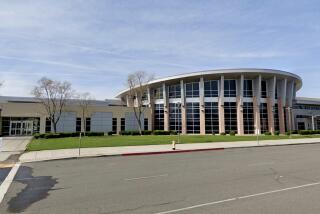Pilot Apparently Tried to Land Jet in Lane of Clear Weather
- Share via
LITTLE ROCK, Ark. — The co-pilot of an American Airlines jetliner that crashed here Tuesday night said that, despite a dangerous thunderstorm, he could see a “bowling alley--a lane through the weather” that the captain decided to follow down to the airport runway, an informed source said Friday.
First Officer Michael Origel’s hospital-bed interview with National Transportation Safety Board investigators Friday morning was his first opportunity to explain the decision to attempt a landing amid winds that soon were gusting at hurricane force.
Capt. Richard Buschmann, the veteran pilot who made that decision, was among the nine who died when Flight 1420 careened down the runway, crashed into a light standard and burst into flames.
More than 80 of the other 136 people on the plane were injured, including Origel, who suffered a broken leg.
The decision to land during the storm has been questioned by several aviation safety experts. Another statement from Origel--that he never lost sight of the runway as the Super MD-80 approached Little Rock after a flight from Dallas-Forth Worth International Airport--appeared to contradict information picked up on the cockpit voice recorder recovered from the wreckage.
The recording shows that someone in the cockpit--presumably Origel, who was handling the radio--twice mentioned losing sight of the runways at Little Rock National Airport as the plane prepared to land.
The cockpit crew “was not deprived of anything as far as the weather was concerned,” the source close to the NTSB investigation said Friday. He said Origel complimented the controllers on their weather briefings.
But despite having this information, the pilots never discussed the possibility of aborting the landing or heading for an alternate airport, the source said.
Although runway visibility was estimated at only 1,600 feet, Buschmann proceeded with the landing, apparently stretching guidelines set by American Airlines. Those guidelines specify that landings should be aborted if there are crosswinds of 12 mph or more when visibility is less than 1,800 feet. The crosswinds mentioned by controllers were about three times that strong.
Origel told investigators that the twin-engine jet touched down firmly but then began to glide--”hydroplaning down the runway” on a film of rainwater as Buschmann tried to bring the aircraft to a safe stop, according to George W. Black, the NTSB member who is heading the investigation.However, Black said that tire tracks found on the runway indicate that the plane’s tires remained in close contact with the pavement and “were not hydroplaning.”
Black said Origel told investigators that he “believed” that well before Flight 1420 touched down, Buschmann had armed the plane’s “spoilers”--flat plates that flip up from the wings to reduce their lift after a plane touches down. This puts additional weight on the wheels to make the brakes more efficient.
Nonetheless, Flight 1420’s spoilers failed to deploy automatically on touchdown, as they would normally.
The NTSB said Buschmann did deploy the plane’s thrust reversers--clamshell-like devices on the engines that, in effect, make them work backward to help slow a landing aircraft.Investigators say he applied the reversers, released them and then reapplied them as Flight 1420 careened down the runway.
More to Read
Sign up for Essential California
The most important California stories and recommendations in your inbox every morning.
You may occasionally receive promotional content from the Los Angeles Times.













